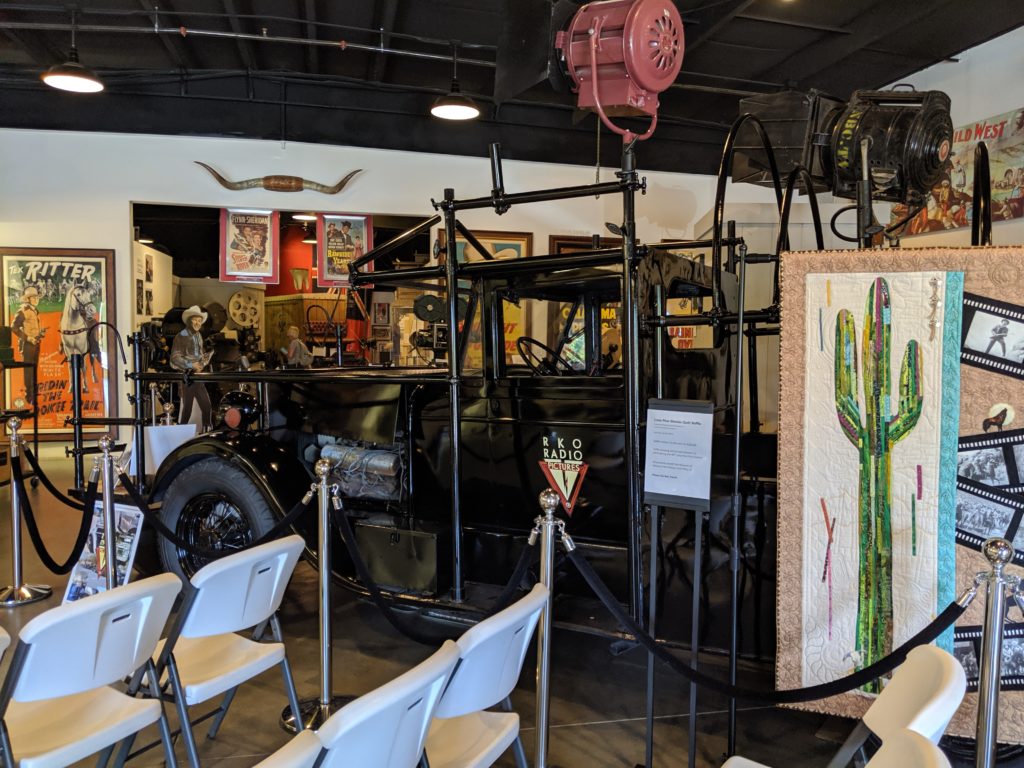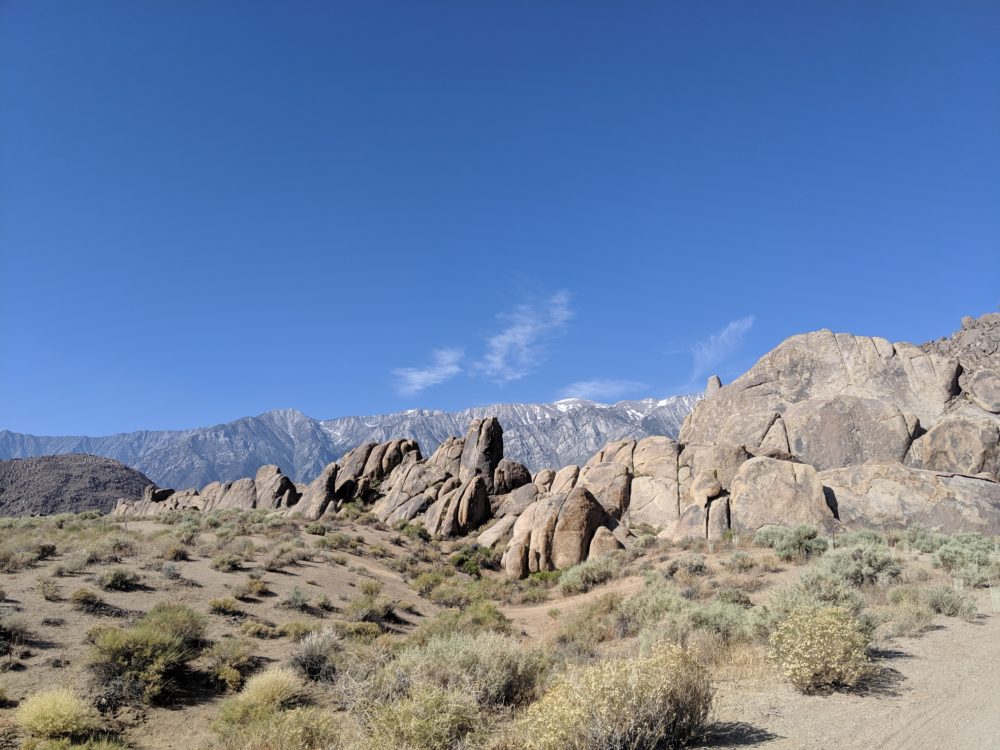A western movie buffs dream destination

The Alabama Hills are located in the foothills on the Eastern side of the Sierra Nevada Mountain Range in California.
Calling all Western movie buffs, the Alabama Hills are calling your name or your elderly relatives, and in that case, well, you’ll be coming along on the road trip to assist them. The Alabama Hills (named after a Confederate War Ship the ‘CSS Alabama’ in the Civil War), is located on the Eastern side of the Sierra Nevada Mountain Range in California and the West side of the Inyo Mountains, nestled in the Owens Valley.
The Alabama Hills are considered the foothills of the Sierra Nevada and are geologically identified as granite. Once upon a time, this granite laid under the surface of a “moist-area filled with vegetation” causing it to weather and caused the rock’s colors to exhibit an orange hue. During the same uplift that resulted in the Sierra Nevada Mountains 100 million years ago, with the creation of Mt. Whitney (the highest peak in the continental United States), the Alabama Hills lifted and formed as well. The Alabama Hills jut up into the sky with a perfect view of Mt. Whitney towering 10,000 feet above the “spires, boulders, and natural arches” that make up the geologic formations of the Alabama Hills.
“The Alabama Hills with its seemingly free nature of being classified as BLM land makes it feel like a camper is in a beloved Western film.”
– Kalley Miller
This geologic phenomenon and its breathtaking view of mountains rising on either side of the Hill’s attracted the attention of Hollywood Film producers in 1920 with its debut silent movie using the Alabama Hills at its setting in the movie, “The Round-Up.” Due to it’s relatively close location to Hollywood, the Alabama Hills became a hot spot for movie production with a current running total of “over 400 films filmed featuring the Alabama Hills landscape.”
The majority of them being Westerns (but not all, think “Tremors,” “Iron Man” and even “Star Trek Generations,”) some household names of Westerns that were filmed in the Alabama Hills are “Hopalong Cassidy,” classics featuring John Wayne like “How the West was Won,” and “North to Alaska.” and even, classics featuring Clint Eastwood like his role in the movie “Joe Kid.”
One of the most incredible things about the Alabama Hills with film history and geology aside is the fact that it’s classified as land belonging to the Bureau Land Management (BLM). BLM is a public agency that falls under the U.S Department of the Interior. When viewing the purpose of BLM land through the lens of outdoor recreation, people of the United States use BLM land to fish, rock-climb, camp, and often the land may boast having mountain bike trails and horseback riding trails. (the list goes on and on).

A photo of the trail leading to the Mt. Whitney portal, Mt. Whitney is the mountain peak on the left side of the photo.
So what does that mean? Well, the land surrounding the Alabama Hills allows free recreation and most importantly, free camping. Yes, free camping. On BLM land a person is allowed to camp in the same spot for fourteen days and often no registration is required.
With a multitude of level sandy places to set up a tent due to the endless amount of dirt roads snaking through the hills (originally made for film vehicles trying to film runaway horse scenes in Westerns), the camping options are endless. It’s accurate to say, that with minimal regulations (obvious rules regarding being a good citizen apply, like packing out the trash) but, with that in mind, it truly feels like a person is in the (peaceful) West with nobody to disturb you.
“A hiker may take in just how quickly topography changes in this region; from desert, to subalpine forests, to mountainous peaks. The Alabama Hills and the surrounding area has it all.”
– Kalley Miller
After spending time in the Alabama Hills outdoorsman and outdoors-women alike can drive ten minutes to the Inyo National Forest Campsite where a four-mile trail begins, zigzagging hikers to eventually make it to the Mt. Whitney Portal. Gone is the sandy desert below, hiking further up into the mountain a hiker will plunge into subalpine forest with the trail following a long a raging river before reaching the Portal. A hiker may take in just how quickly topography changes in this region; from desert, to subalpine forests, to mountainous peaks. The Alabama Hills and the surrounding area has it all.

An RKO Pictures 1928 Lincoln Film car on display in the Lone Pine Western Film Museum, six miles from the Alabama Hills.
After getting tired of the outdoors (maybe you never will) but nonetheless, take a drive to the Western Film Museum located 15 minutes from the Alabama Hills in Lone Pine, CA.
According to The Western Film Museum’s website, it aims to “honor the men and women of the silver screen who interpret the lives of the American Cowboy; the legendary iconic movie and TV heroes and heroines of America’s 19th and 20th centuries.” In fact, the museum is home to John Wayne memorabilia, movie props, costumes, a film car, and even a stagecoach. It’s one of the “largest” museums focused solely on the Western film and the “only museum devoted to chronicling western film history and its impact on American culture.”
Growing up in the Midwest, it’s almost impossible not to be surrounded by at least one relative (young or old) that’s obsessed with Westerns. If that be a grandparent, cousin, or uncle. Visiting the Alabama Hills is a place that makes people connect with the ones they have lost; due to time, who spent their life watching Westerns on an old T.V. set or were the ones who read Westerns with cover-jackets that all looked similar. Seeing the Alabama Hills for the first time connects a person to the ones they miss.
When visiting people remember the free spirit that’s often depicted in Western movies.
I’ll end with a little twist of a movie quote originally said by Robert Duvall, “It ain’t dying I’m talking about, it’s living. I doubt it matters where you die, but it matters where you live,” and when I mean live, I’m talking about what a person experiences.
After all, the wild West is calling and I must go.
